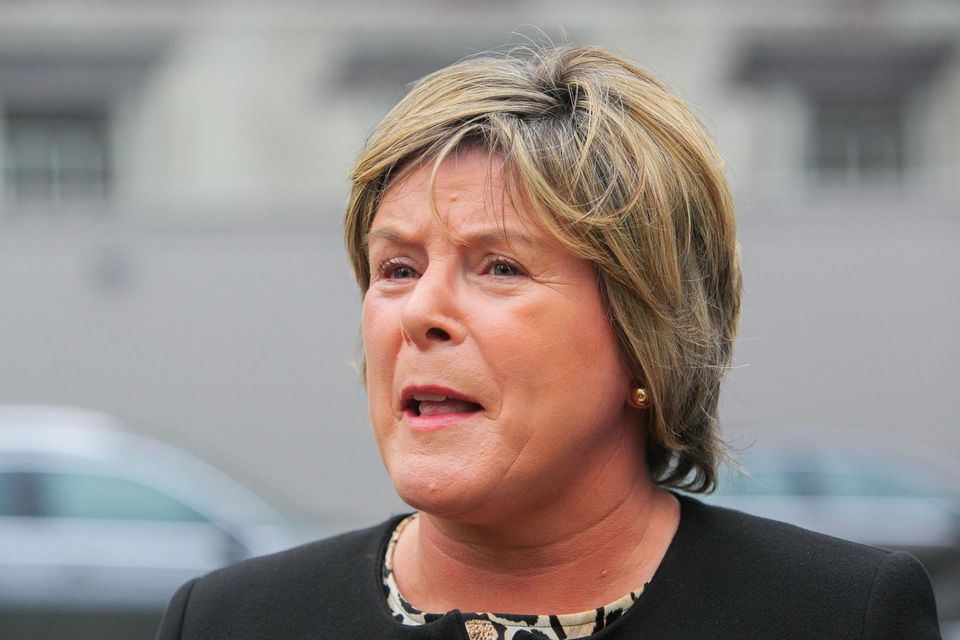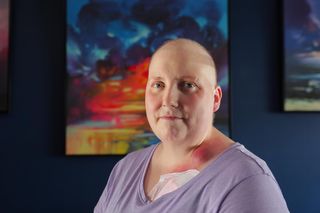Ban on use of nursing homes to house refugees lifted but operators face two-year wait to exit market
Minister for Older People, Mary Butler. Photo: Gareth Chaney / Collins
The Government is lifting the ban on private nursing homes becoming refugee centres, but operators will have to wait two years before they can exit the market.
Minister for Older People Mary Butler introduced the ban late last year amid fears nursing homes were closing down with a view to converting their properties into accommodation for refugees fleeing war zones.
There was concern in the Government that private operators viewed housing refugees as more lucrative than caring for older people.
The minister reviewed the moratorium in recent weeks and it has been agreed former nursing homes can be used to house refugees.
However, operators will first have to provide the Health and Information Quality Authority (Hiqa) with six months’ notice of their decision to close and undergo a further 18-month cooling-off period to give residents and staff time to make alternative arrangements.
A significant number of nursing homes have given Hiqa notice of their intention to close over the past two years and the Government feared a trend was emerging in the industry.
Read more
In a letter sent to Integration Minister Roderic O’Gorman this week, Ms Butler said 18 nursing homes gave notice to close last year and another four told Hiqa of their intention to stop operating this year.
“Even though the motive behind closures is not always the conversion of the facility to temporary emergency accommodation for international protection applicants or beneficiaries of temporary protections, it has been noted that some of these nursing homes have closed or were closing with the intention to convert into temporary emergency accommodation centres,” she said.
“Despite the six-month statutory notification period, concerns still exist about the speed with which closures are happening and the impact this has on residents.”
Ms Butler said the ban introduced last November was “always envisaged as a temporary solution” and her officials have since examined how to address the challenges posed by the refugee crisis.
She said a “more flexible approach” is being recommended to balance the needs of both the Department of Health and the Department of Children, Equality, Disability, integration and Youth.
She said the 18-month cooling-off period will allow for “an appropriate closure process for both staff and residents” while also preventing nursing homes from “being empty indefinitely” when they could be repurposed to be come accommodation for refugees.
On This Day in History - 2nd June
“The approach will allow for new accommodation for international protection applicants and beneficiaries of temporary protections, while at the same time disincentivising the closure of viable nursing homes which are providing a vital service to the current residents and maintaining nursing home capacity at a local level.”
Mr O’Gorman has asked all his colleagues in the Cabinet to identify potential accommodation within their portfolios to help with the biggest humanitarian crisis to hit Europe in decades. More than 83,000 Ukrainian refugees are currently being housed in Ireland after fleeing their country in fear of Vladimir Putin’s soldiers.
Department of Justice officials told an Oireachtas committee hearing this week that an average of 88 Ukrainian refugees continue to arrive in Ireland every day seeking shelter.
Separately, a total of 13,651 people made applications for international protection last year, an increase of 186pc on figures from 2019.
Department of Justice deputy secretary general Doncha O’Sullivan told the committee that just over 200 males seeking international protection are currently without accommodation.













